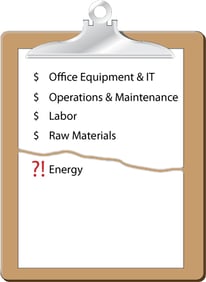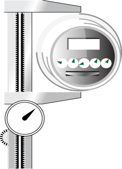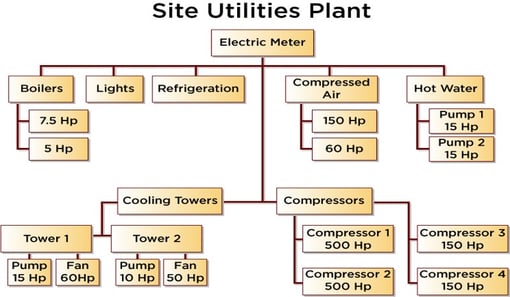Monitoring energy use is a simple first step to decreasing costs and improving operations.
A manager usually doesn’t approve a major expenditure without a detailed accounting of where the money is spent. So why isn’t energy typically accounted for in the same way?
isn’t energy typically accounted for in the same way?
On the OT (Operational Technology) side of manufacturing, process, and other industrial facilities, energy is often a fixed, overhead cost. The plant manager or machine operator is responsible for performance metrics like throughput and quality, while the energy bill is paid by someone in the accounting department. The implication of this lack of energy visibility is often operational costs that are higher than necessary.
On the other hand, many companies have taken steps toward energy awareness. Some forward-thinking manufacturing companies even go as far as to calculate “energy intensity,” or the amount of energy per unit of output. Others at least have put monitoring systems in place to analyze data, eliminate assumptions, and identify trouble spots.
The old adage “you can only manage what you can measure” could not be more true when it comes to energy and power. In 2009, the dramatic increase in the cost of electrical power in California prompted Opto 22 to put energy awareness measures in place (read the case study here). By connecting to loads, monitoring the  data, identifying anomalies, and making necessary corrections, Opto 22 was able to reduce energy spend by 27%, saving thousands of dollars per month.
data, identifying anomalies, and making necessary corrections, Opto 22 was able to reduce energy spend by 27%, saving thousands of dollars per month.
For many industrial rate-payers, the electrical utility bill includes both tiered TOU (time-of-use) pricing for energy consumption (kWh) and a demand charge for peak power (kW). The demand charge is often as much as or more than the consumption charge. Simply reducing the peak power by a few kW can result in significant savings and can be accomplished by relatively simple changes, like using VFDs (variable frequency drives) or soft starters on large inductive loads like motors, staging equipment, and implementing operational improvements based on what the collected data reveals.
Another compelling reason to measure power is machine health. With the proliferation of digital transformation, IIoT and Industry 4.0 predictive maintenance is an initiative in many factories. Measuring machine or system overall power draw is a great way to detect impending problems with things like motors, bearings, filter pressures, and lubrication, without having to instrument each component.
The method to connect to and measure a three-phase load has not changed, but what is different today with IIoT technology is the ease with which this data can be visualized, extracted, shared with IT systems, combined with other data (OEE for example), and ingested into analytics platforms. Products like groov EPIC and groov RIO support MQTT, Node-RED, RESTful APIs, and have also put cybersecurity at the forefront with features like a configurable firewall and encrypted, authenticated connections.
So how do you get started monitoring energy or power? With a top-down approach, you can identify loads and rank them from largest to smallest.

Start with the mains power, move next to subpanels, and then progress to individual machines. Throughout this process you can begin a cycle of “connect, monitor, identify, and correct” and you will surely find opportunities for immediate savings. You'll be able to start to manage your energy costs like any other expenditure while also extending your machine life.

